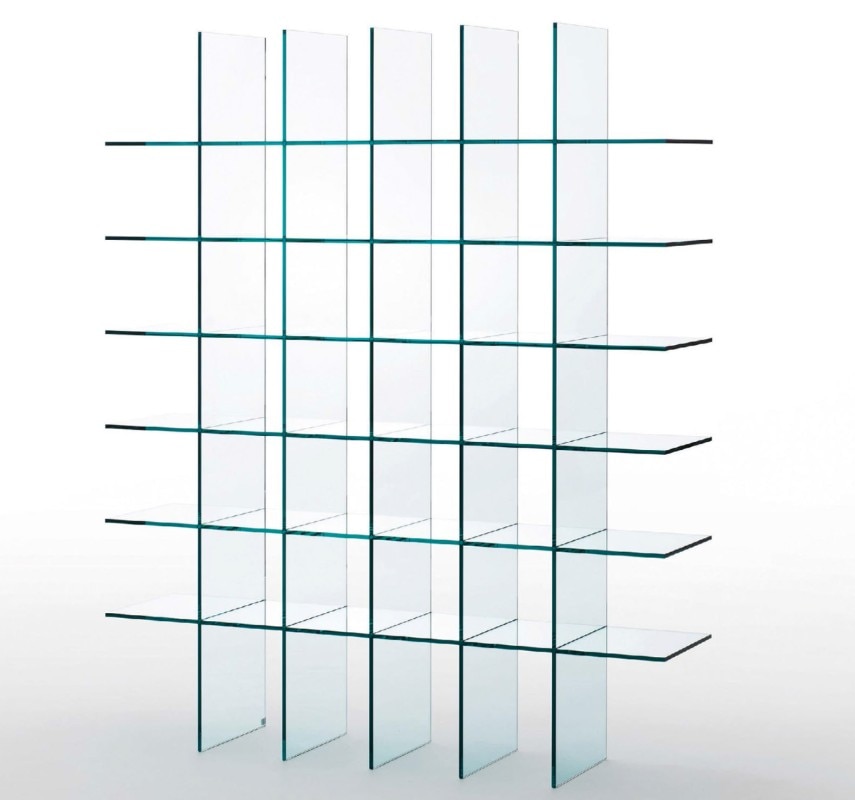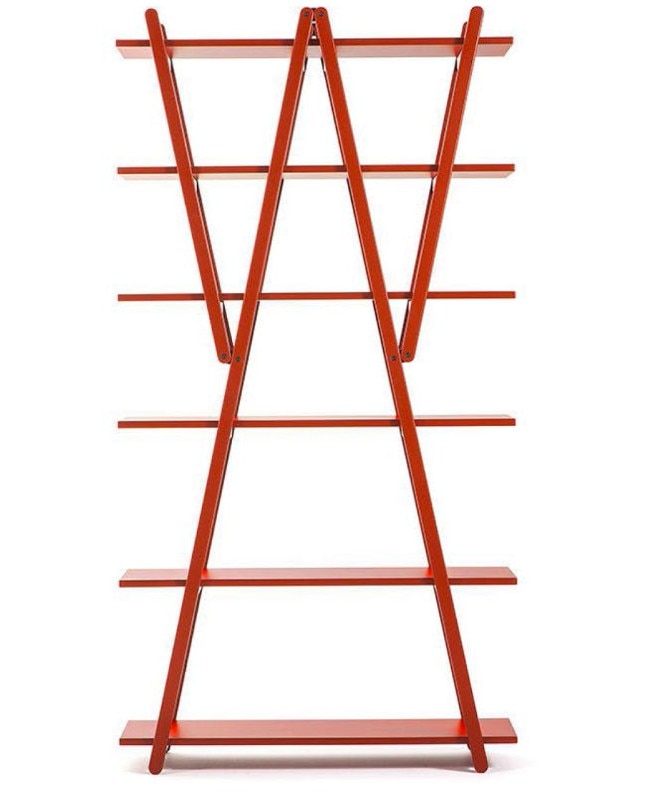The term “bookcase” is, in reality, rather ambiguous. In a home, a bookcase can be tall and filled with books to create a library, or it can serve as a display case destined to hold just a few, select volumes and objects.
While the first type is decisively the prerogative of interior design (being a fixed form of furnishing), and requires a dedicated room, or at the very least an entire wall, the second falls into the category of furniture design.
Usually vertical in form, domestic bookcases provide for a certain level of “modularity”, beginning with standard sizes of approximately 100 x 200 cm, it is often the case that they “grow” over time. Also, for this reason, their form is fairly simple, respecting the rule of repetition of horizontal surfaces supported by side supports, or a kind of honeycomb made up of square units.
However, there are a number of bookcases which are seen as “sculptures” and therefore destined to hold just a few books. There are also - less frequently seen but most certainly fascinating – variations of bookcases which are floor to ceiling, and which also act as partitions. This latter type, much used in the 1950s-1960s, has recently made a notable comeback due to the popularity of vintage.
One other form of bookcase is the so-called “column”, usually used in the centre of rooms and generally rotating, inspired by smaller containers destined for the most prized volumes which, in the grand libraries of noble homes, were placed in the centre of the room.
The most frequently-used material these days for bookcases is, on the one hand, wood, either plywood or veneered MDF, or on the other sheet metal, often enamelled.























